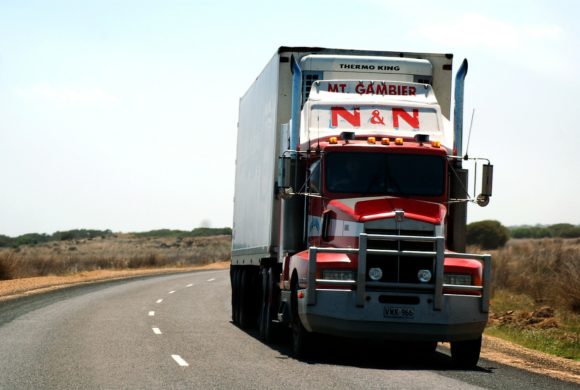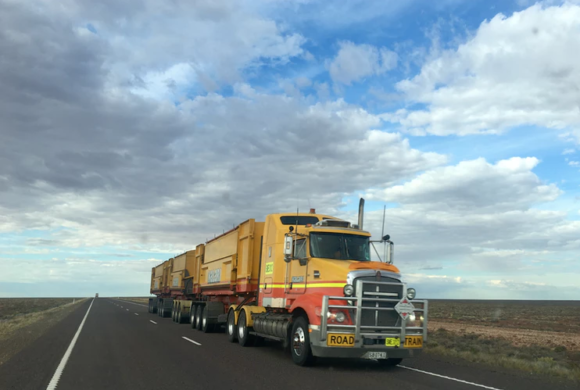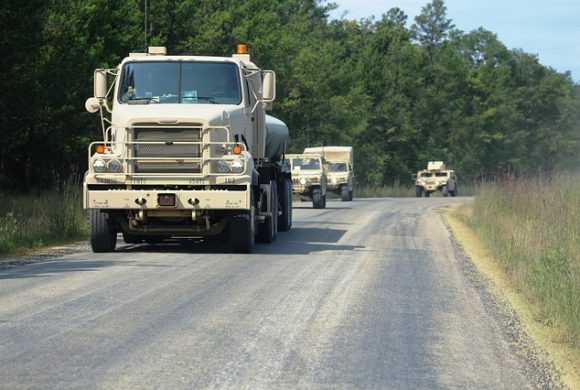
by Queener Law | Oct 27, 2017 | Auto Accident, Tennessee
Safety advocates are calling for more safety testing of autonomous vehicles before they are released to the market in Tennessee and elsewhere. Recently, the advocates’ efforts were rewarded in the Senate. A senatorial committee included some of the recommendations of the Advocates for Highway and Auto Safety in a pending bill that would govern the manufacture and release of autonomous vehicles. The bill originally would have exempted many autonomous vehicles from the safety testing requirements of the National Highway Traffic Safety Administration, something that the safety experts decried. If the bill ultimately passes, more safety testing will be required before the manufacturers will be able to release the vehicles for sale on the market.
Safety Testing Recommendations
The Advocates for Highway and Auto Safety lobbied members of the Senate Commerce, Science, and Transportation Committee to limit the number of allowed exemptions from safety standards for autonomous vehicles in the bill. They also asked that the Department of Transportation is required to conduct more safety evaluations of exempt AVs before they agree to a larger release of the vehicles. Other provisions that the advocates lobbied for include mandating the publication of safety evaluation reports of AVs by their manufacturers, the inclusion of alert systems to prevent people from forgetting children behind in cars and the inclusion of safeguards for cybersecurity issues.
The group received backing from several senators, and the bill passed the committee on a bipartisan basis. The safety recommendations from the Advocates for Highway and Auto Safety was included in the markup of the bill, leading the organization to claim a victory in its lobbying efforts. The organization says that driverless vehicles should not be released on a mass basis until the manufacturers can show that they are safer than cars that are controlled by human drivers.
Autonomous vehicles show promise in their potential to greatly reduce injury and fatality accidents, but it is important to make certain that they are safe before they are made available on the mass market. The bill would lead to more on-road testing of the vehicles, and the inclusion of the additional provisions may help to make the testing safer for the public.
While driverless cars may lead to a drop in the number of accidents, some are still bound to happen. A Nashville car accident lawyer may help accident victims who are injured in accidents with AVs.

by Queener Law | Oct 19, 2017 | Tennessee, Trucking Accident
Of the many potential causes of truck accidents in Tennessee, regulatory violations are some of the most frequently occurring. The Federal Motor Carrier Safety Administration has strict regulations in place that are geared toward reducing the risk of trucking collisions, but many drivers and carriers violate the rules in an effort to get their loads to their destinations in time. When a truck collision results from a trucking violation, a truck wreck attorney may argue a prima facie negligence claim against the responsible drivers and their employers.
Common Trucking Industry Violations
The FMCSA has established multiple rules that are meant to reduce the risk of trucking accidents. When large trucks cause collisions, victims are much likelier to suffer devastating injuries or fatalities. As a result, the industry is strictly regulated.
Drivers are only supposed to drive a certain number of hours per day, and they are supposed to take a minimum number of required breaks. There are also regulations concerning what the drivers are allowed to do while they are driving and rules about the frequency of maintenance and inspections of the trucks.
Under the law, drivers are only supposed to drive for 11 hours out of 14 with three extra hours designated for other activities, including eating, refueling, and others. They are also supposed to get a minimum of 10 hours off for rest before beginning new shifts. When drivers violate these hours of service rules, they may be fatigued. This heightens the risk of accidents caused by tired truck drivers.
The FMCSA also prohibits truck drivers from using their hands to make phone calls or to text while they are driving. Drivers who are caught texting, reading texts or talking on the phone while driving face substantial fines. They are allowed to talk on hands-free devices, however.
Truck companies are supposed to conduct regular inspections of their fleets. They are also supposed to follow regular maintenance schedules and to make prompt repairs. Drivers who pull over to have their required inspections will be fined if there are violations that are discovered. Road-side inspections involve looking at the brakes, load securement, exhaust system, lights, and tires. The inspectors also review the drivers’ licenses, logbooks, and paperwork to ensure that drivers and their vehicles are in compliance with the law.
Adhering to safety regulations is important for preventing accidents and saving lives. Violating the rules may cause serious accidents, harming others.

by Queener Law | Oct 9, 2017 | Kentucky, Personal Injury, Tennessee
Defective toys that have been recalled are still being sold by some online retailers, according to a recent study. It is important for parents to be aware of the toys that have been recalled so they can remove them from their homes. The toys that were found in the survey pose multiple hazards, including fires, ingestion dangers and potential neurological issues caused by lead paint. When children are injured by defective toys, a personal injury attorney may work to hold the manufacturers and retailers liable for damages.
Defective Toys Sold After Recalls
According to the U.S. Public Interest Research Group Fund in its annual “Trouble in Toyland” report, more than a dozen recalled toys were found for sale by online retailers after they were recalled by the Consumer Product Safety Commission from Jan. 2015 to Oct. 2016. During this time period, the CPSC recalled more than 40 toys, which involved 35 million individual products. The PIRG Fund recommends that parents search their homes to determine whether or not any of the recalled toys that appear on the CPSC’s recall list are in their homes.
Defective Toy Dangers
Some of the toys that the PIRG Fund discovered contained high amounts of lead paint. If lead paint is ingested by children, it can cause serious neurological problems. Also found still for sale was a flying machine with a charging cord that overheats, making it a fire hazard. One toy had two magnets that could be swallowed. If ingested, the magnets can link together in the intestines of children and cause serious medical problems.
It is illegal for retailers to sell toys that have been recalled. The PIRG Fund has notified the CPSC about the violators. The fund also recommends that parents subscribe to the CPSC’s recall list and check it frequently to make certain whether or not toys that they purchase have been recalled. If they find recalled toys, they should take steps to return them.
Children may be seriously injured or killed by defective toys. Despite the hazards they present, some sellers are still selling these dangerous products. When retailers and manufacturers continue to offer defective toys on the market after they have been recalled, they may be held accountable under the theory of strict liability. A personal injury attorney may seek to recover damages for injured clients.

by Queener Law | Sep 19, 2017 | Colorado, Kentucky, Tennessee, Trucking Accident
While many truck accidents are caused by driver mistakes, some result because of defective parts on vehicles. According to the Federal Motor Carrier Safety Administration, almost 30 percent of accidents involving large trucks happen because of part failures. Identifying the parties who are responsible in cases involving defective components can be complicated. Victims may need to get help from expert witnesses who can demonstrate the link between the failed part and the accident’s cause. A truck accident lawyer may work with experts and investigators to help to prove liability and causation.
Common Truck Component Defects
There are a number of different defects that can lead to serious truck collisions. The FMCSA reports that brake failures are one of the leading causes of accidents related to defective parts. Other component defects that may lead to accidents include lighting problems, door and hood failures, wheel defects, engine or transmission failures and attachment system failures. Any of these defects may lead to serious accidents involving the trucks alone or other vehicles.
Defect Categories
In cases involving defective parts, there are three primary categories of defects. These include design defects, manufacturing defects and maintenance issues. Components that have design defects are parts that have problems in their initial designs, causing them to not function as intended. Parts that have manufacturing defects are made incorrectly, causing them to fail. Poorly maintained parts can also lead to failures and accidents. Companies are supposed to routinely inspect and maintain their trucks. When they fail to do so, the companies may be liable for resulting lawsuits. Some companies contract out their repair and maintenance work to third-party contractors. In those cases, the third-party repair and maintenance companies may be named as the defendants in resulting lawsuits.
Damages
People who are seriously injured in truck accidents may suffer both economic and noneconomic losses. By filing lawsuits against the responsible parties, they may recover compensation for both. The amount of damages that might be available in a case will vary depending on the losses and on what happened. Before agreeing to accept proposed settlements, it is important for people to understand how to correctly value their claims. Determining the potential claim value should include calculations of past and future medical costs, past and future lost earnings, pain and suffering, disfigurement and others. A truck accident lawyer may help to value a claim by calculating damages in the various categories.

by Queener Law | Sep 13, 2017 | Colorado, Kentucky, Tennessee, Trucking Accident
Trucks that are used to transport hazardous materials pose much greater dangers than do other large trucks, including toxic exposures, fires, environmental damage, and explosions. Because of the risks, trucking carriers must carry higher liability insurance coverage on their hazmat trucks. The Federal Motor Carrier Safety Administration regulates the transportation of hazardous materials and it classifies them into nine different categories.
Hazardous Materials Categories
When a truck is transporting a hazardous material, the material and the truck must be properly marked and classified. The FMCSA classifies the materials as explosives, flammable liquids, flammable solids, gases, oxidizers, poisons, radioactive material, corrosives and miscellaneous hazardous materials. By requiring markings on trucks that identify the classes of materials that they are transporting, the FMCSA is trying to make certain that other motorists understand the dangers that the chemicals pose. They also are meant to help first responders and law enforcement officers who respond to truck accidents and spills.
Accident Dangers with Hazmat Trucks
When truck accidents involving trucks that are transporting hazard chemicals happen, spills may occur. The dangers that the chemicals pose to other motorists depend on what they are. Accident victims may suffer chemical burns or thermal burns. They may be injured or killed in explosions, suffer amputations, suffer poisonings or be exposed to cancer-causing agents. In addition, some chemicals that seep into the ground may be radioactive, placing everyone who lives in the area at risk of harm if the chemicals get into the water supply.
Common Hazmat Truck Accident Causes
While accidents may be caused by many different things, there are several common causes of accidents involving trucks carrying hazardous materials. One of the most common problems happens because of improperly securing the material when it is loaded. Loads that are not secured properly may be likelier to spill or to roll away from the truck. If they shift, they may also be likelier to explode. Driver errors are also common causes of hazmat truck accidents. Drivers who turn left too fast, speed, follow other vehicles too closely or drive while they are distracted or impaired place others at risk of accident involvement.
When hazmat accidents happen, the victims may be permanently disabled or disfigured and they may also die. A semi truck accident lawyer represents victims and their families in the recovery of damages from hazmat accidents.

by Queener Law | Sep 7, 2017 | Motorcycle Accident, Tennessee
In spite of research showing that lane splitting by motorcyclists reduces the risk of rear-end collisions and injuries to riders’ torsos and heads, lane splitting remains illegal in Tennessee. Lane splitting involves a motorcyclist pulling up between vehicles instead of behind them, which helps to prevent them from being struck from behind while also reducing congestion. When lane splitting is not done in the correct way, it can increase the risk of accidents and cause incidents of road rage. While there are pros and cons of the practice, when lane splitting is done in a safe manner it may reduce the risk of motorcycle accidents. When accidents are caused by negligent motorists, a personal injury attorney may help the victims.
Lane Splitting Findings
Researchers at the University of California, Berkeley reviewed data from 6,000 motorcycle accidents from June 2012 and Aug. 2013. Of those, 997 involved motorcyclists who were lane splitting when they crashed. Lane splitting was found to be the safest when the motorcyclists did not drive more than 15 mph faster than the vehicles around them and when they were traveling less than 50 mph. Nine percent of the lane-splitting motorcyclists suffered head injuries while 17 percent of motorcyclists who weren’t lane splitting suffered injuries to their heads. Nineteen percent of lane-splitting motorcyclists suffered torso injuries as compared to 29 percent of motorcyclists who were not lane splitting. The lane-splitting motorcyclists were also less likely to have been injured in rear-end crashesas compared to riders who were not lane splitting.
Tennessee Lane Splitting
At the urging of motorcyclists, the Tennessee House of Representatives had a bill introduced in 2015 that would have legalized lane splitting in the state. The bill listed several advantages that would have been offered if lane splitting was legalized, including better visibility, better focus, reductions in rear-end crashes and reductions in traffic congestion. The bill was not taken up and died before it could be considered. Therefore lane splitting is still illegal in Tennessee despite its potential to prevent motorcycle accidents.
When motorcyclists are injured in accidents, they often suffer debilitating injuries because of the minimal protection that they have from the environment around them. A personal injury attorney may help injured victims with their accident claims.






